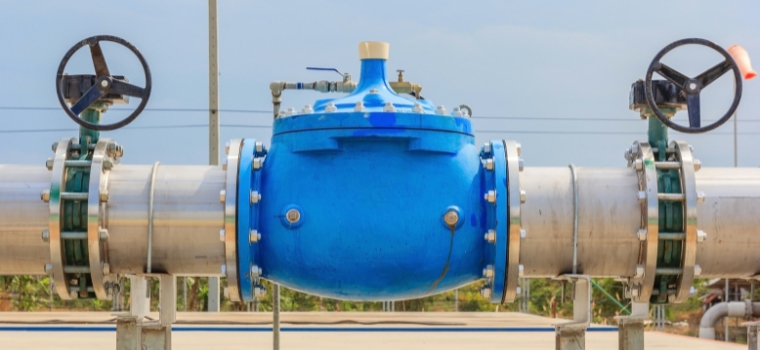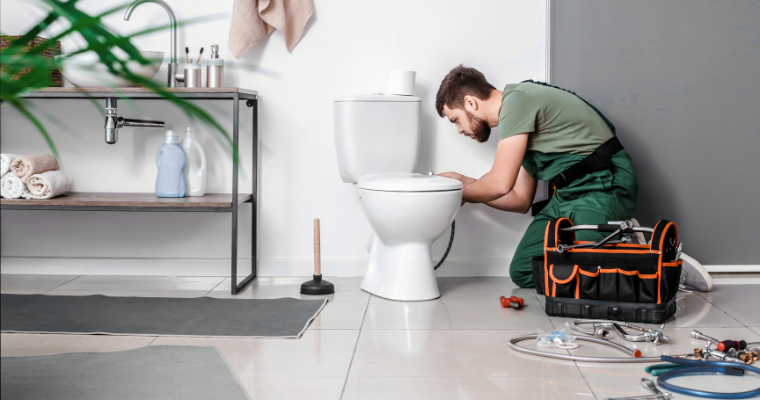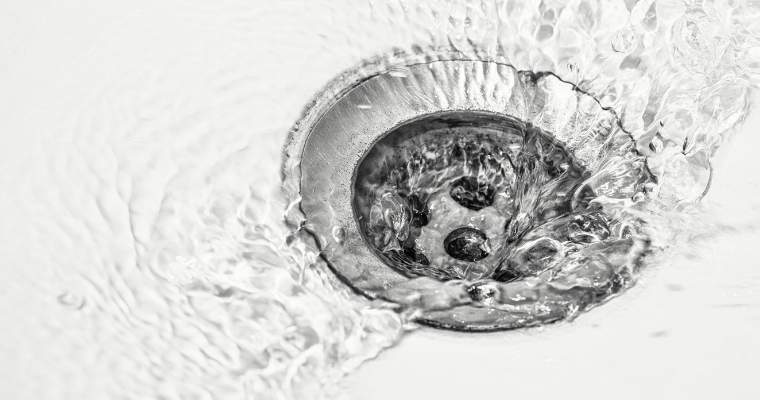Learning how to increase water pressure in your home can significantly improve your daily comfort. Low water pressure can make showers weak, dishwashing slow, and even basic cleaning tasks frustrating. This guide offers a detailed look at practical and safe methods to raise water pressure at home without unnecessary guesswork or expenses.
We will walk through common causes, clear signs of pressure problems, and specific steps to fix or improve your home’s water flow. By following this guide, you can find the right solution based on the actual condition of your plumbing system.
10 Common Reasons for Low Water Pressure in Homes
Low water pressure can disrupt daily activities like showering, dishwashing, and laundry. Identifying the cause is essential for effective resolution. Below are the ten most common reasons for low water pressure in residential properties:
- Clogged Pipes
Over time, mineral deposits, rust, and debris can build up inside pipes, restricting water flow and reducing pressure. - Corroded Plumbing
Older homes often have galvanized steel pipes that corrode internally. This corrosion narrows the pipe diameter, affecting water pressure significantly. - Leaking Pipes
Leaks in your plumbing system reduce water volume and pressure. They also waste water and can lead to structural damage if not addressed. - Faulty Pressure Regulator
A malfunctioning or incorrectly set pressure regulator can cause either high or low water pressure. These devices should be inspected and adjusted or replaced as needed. - Municipal Supply Issues
Sometimes, the issue lies outside your home. The municipal water supply may experience drops in pressure due to maintenance, line breaks, or high demand. - Partially Closed Valves
The main shutoff valve or water meter valve may be partially closed, restricting flow. Both should be fully open for optimal pressure. - Peak Usage Times
During certain hours (e.g., early morning or evening), neighborhood-wide water usage can be high, leading to temporary pressure drops. - Pressure Tank Problems (Well Systems)
Homes using private wells may experience low pressure if the pressure tank or pump is malfunctioning or incorrectly calibrated. - Blocked Aerators or Fixtures
Faucets and showerheads can collect sediment and scale, reducing flow. Regular cleaning or replacement may resolve this. - Plumbing Layout and Pipe Size
Improperly sized or overly long plumbing runs can cause pressure loss, especially in larger or multi-story homes.
If water pressure remains low after basic checks, it may be necessary to consult a licensed plumber. Professional tools and diagnostics can help pinpoint hidden leaks, deep blockages, or complex system issues.
Related blog: Ultimate Guide to Becoming a Professional Plumber
Signs That Indicate a Water Pressure Problem
Identifying early signs of water pressure issues can help prevent more significant plumbing problems. Below are the 10 most common indicators:
| S. No. | Signs | Descriptions |
|---|---|---|
| 1 | Slow Flow from Faucets and Showerheads | If water trickles instead of flowing steadily, especially in multiple fixtures, it’s a strong sign of low water pressure. |
| 2 | Toilet Tanks Refill Slowly | Toilets that take longer than usual to refill may be affected by reduced water pressure in the supply lines. |
| 3 | Washing Machine or Dishwasher Takes Longer to Run | Appliances that rely on water may operate inefficiently or take longer to complete cycles when water pressure is too low. |
| 4 | Fluctuating Water Pressure | Inconsistent water flow — strong one moment and weak the next — can point to an issue such as a failing pressure regulator or hidden leak. |
| 5 | Weak Shower Spray | A noticeable drop in shower pressure, especially if it affects all bathrooms, often signals a broader system problem. |
| 6 | Noisy Pipes | Whistling, banging, or vibrating sounds from pipes may indicate pressure fluctuations or air trapped due to pressure imbalance. |
| 7 | Low Water Pressure in Only One Fixture | This usually means a localized issue such as a clogged aerator or faulty fixture rather than a whole-house problem. |
| 8 | Sudden Drop in Pressure | A sharp, unexplained loss of pressure could suggest a burst pipe, major leak, or municipal supply issue. |
| 9 | Visible Leaks or Damp Spots | Water marks, damp walls, or pooling water around the home can indicate a hidden leak that’s lowering pressure. |
| 10 | Pressure Gauge Reading Below Normal | If your home has a pressure gauge, anything consistently below 40 PSI (pounds per square inch) may indicate a problem requiring attention. |
What’s Next After Finding a Water Pressure Issue?
After identifying a water pressure issue, check whether it affects all fixtures or just one to help isolate the cause. Ensure all shut-off valves, including the main and water meter valves, are fully open. Clean faucet aerators and showerheads to remove any blockages. Use a pressure gauge to measure the water pressure—normal residential range is typically 40–60 PSI. Look for visible leaks or damp areas that may signal hidden plumbing issues. If the problem persists or affects the whole house, it’s best to consult a licensed plumber for a detailed inspection.
You may also read: How To Cure Gum Disease Without A Dentist?
How to Increase Water Pressure in Your Home?
When your whole home experiences no water pressure, the issue could be serious.

Let’s go through the 8 steps to fix no water pressure in the entire house:
1. Check the Main Water Valve
The main water valve controls water flow into your home. If it’s partially or fully closed, water won’t reach your plumbing system properly. Locate the valve—usually near the water meter or where the main line enters the house—and ensure it is fully open by turning it counterclockwise.
2. Inspect the Water Meter Valve
The water meter valve, often located near the main valve, can also restrict flow if partially closed or faulty. Make sure it is fully open. Sometimes, utility workers close this valve during maintenance and forget to reopen it.
3. Look for Visible Leaks
Leaks anywhere in your plumbing reduce overall water pressure. Check under sinks, around toilets, near appliances, and in exposed pipes for damp spots or puddles. Even small leaks can lower pressure significantly and should be repaired promptly.
4. Test Water Pressure Using a Gauge
Attach a water pressure gauge to an outdoor spigot or laundry faucet to measure your home’s water pressure. Normal residential water pressure typically ranges between 40 and 60 PSI. If your reading is below this, the problem might be with the municipal supply or internal plumbing.
5. Check the Pressure Regulator (If Installed)
Many homes have a pressure regulator valve that controls water pressure to protect plumbing. If this device malfunctions or is set too low, it can cause a drop in pressure throughout the house. Inspect and, if needed, adjust or replace the regulator.
6. Clean or Replace Faucet Aerators and Showerheads
Mineral buildup inside aerators and showerheads can severely limit water flow, mimicking a pressure issue. Remove these fixtures, soak them in vinegar to dissolve deposits, or replace them if cleaning doesn’t improve flow.
7. Flush the Plumbing System
Sediment or debris can accumulate in pipes, causing blockages. Open all faucets and let water run for several minutes to flush out any buildup. This step helps clear minor clogs and restores pressure.
8. Contact Your Water Supplier or a Licensed Plumber
If none of the above steps restore pressure, contact your municipal water supplier to check for supply issues or maintenance work in your area. If the problem is internal and unresolved, hire a licensed plumber to diagnose hidden leaks, damaged pipes, or faulty equipment requiring repair.
Following these steps will help you identify and often resolve no water pressure issues in your home. If the problem persists, professional assessment is essential to ensure a safe and reliable water supply.
You may also know: How Construction Loan Calculator Works for Real Estate
Simple Ways to Boost Water Pressure Throughout the House
Boosting water pressure in your home often starts with simple checks and minor fixes. Begin by ensuring the main water valve is fully open and that there are no partially closed shut-off valves. Clean or replace faucet aerators and showerheads, as mineral buildup can restrict flow. If your home has a pressure regulator, check if it’s set too low or malfunctioning. Adjusting or replacing it can significantly improve overall pressure. Also, make sure there are no hidden leaks in the plumbing system, as even small leaks can cause a noticeable drop in pressure.
Clear clogged fixtures, check all valves, and upgrade key components to restore strong water pressure throughout the house.
If the pressure remains low, consider installing a water pressure booster pump. This device increases pressure throughout the entire house, especially in homes with naturally low municipal supply. Another option is to upgrade old pipes that may be corroded or clogged, especially if your home is older. Regularly flushing your plumbing system can also help remove debris and maintain flow. These practical steps can make a noticeable difference in water pressure without the need for major renovations.
When to Hire a Plumber for Low Water Pressure Issues?
When to Hire a Plumber for Low Water Pressure Issues
Not every water pressure issue can be fixed with basic steps. In some cases, calling a licensed plumber is the safest and most effective option.
- You should consider hiring a professional if you notice:
- No improvement after trying standard fixes
- Multiple leaks or signs of hidden water damage
- Very low pressure without a clear reason
- Aging or corroded plumbing that may need replacement
Here’s a quick guide to help you decide what you can handle yourself and when it’s better to call a plumber:
| Situation | DIY (Do It Yourself) | Hire a Plumber |
|---|---|---|
| Cleaning showerhead | ✅ | |
| Adjusting pressure regulator | ✅ | |
| Replacing pipes | ✅ | |
| Fixing underground leaks | ✅ | |
| Installing booster pump | ✅ |
Hiring a plumber ensures repairs follow local plumbing codes, avoids further damage, and provides long-term peace of mind.
FAQ on Water Pressure in Home
Typically, residential water pressure ranges between 40 and 60 PSI. Anything below 40 PSI may feel weak.
Common causes include partially closed valves, leaks, clogged fixtures, or municipal supply issues.
Yes, if the regulator is set too low or is faulty, it can reduce water pressure throughout the home.
You can attach a pressure gauge to an outdoor spigot or laundry tub faucet to get an accurate reading.
Yes, corroded or clogged pipes can significantly reduce water flow and cause pressure problems.
You may also read: How to Become a Travel Agent?
Final Thought
Raising your home’s water pressure involves understanding the causes, identifying symptoms, and applying the right solutions. While many steps can be handled without professional help, some cases demand a skilled plumber to ensure long-term results. By following the guidance in this article, you’ll improve not just water pressure but also your home’s overall efficiency and comfort. Consistent water flow supports better hygiene, cleaner laundry, and a more functional household—making the effort worthwhile.



